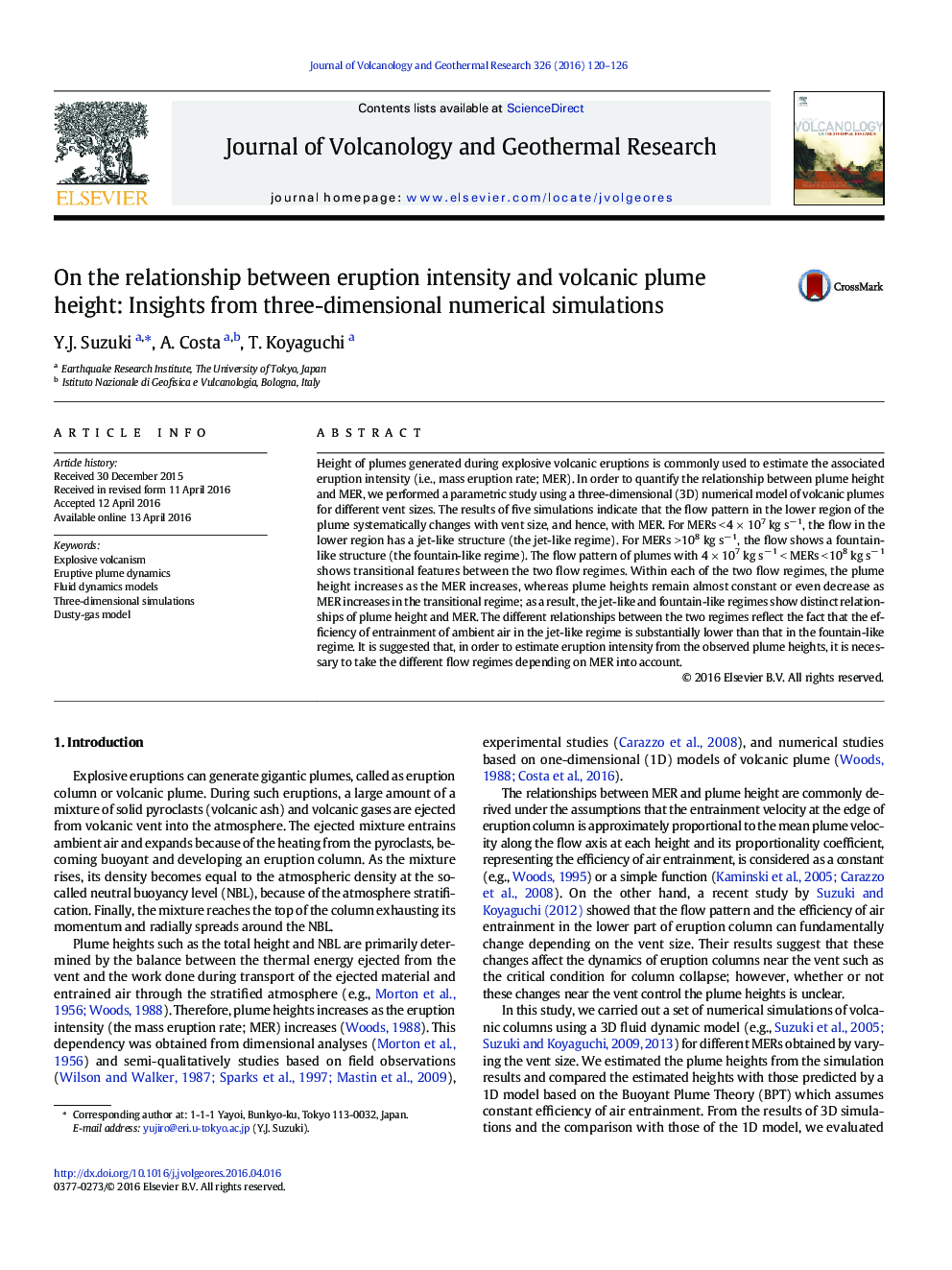| Article ID | Journal | Published Year | Pages | File Type |
|---|---|---|---|---|
| 4712882 | Journal of Volcanology and Geothermal Research | 2016 | 7 Pages |
•We performed a parametric study of volcanic plumes using a three-dimensional model.•Simulation results indicate that flow regime changes when the mass eruption rate is 4–10 × 107 kg s− 1.•Three different flow regimes characterized distinct relationships of mass eruption rate and plume height.•The different relationships in the different regimes reflect the difference in the efficiency of air entrainment.
Height of plumes generated during explosive volcanic eruptions is commonly used to estimate the associated eruption intensity (i.e., mass eruption rate; MER). In order to quantify the relationship between plume height and MER, we performed a parametric study using a three-dimensional (3D) numerical model of volcanic plumes for different vent sizes. The results of five simulations indicate that the flow pattern in the lower region of the plume systematically changes with vent size, and hence, with MER. For MERs < 4 × 107 kg s− 1, the flow in the lower region has a jet-like structure (the jet-like regime). For MERs > 108 kg s− 1, the flow shows a fountain-like structure (the fountain-like regime). The flow pattern of plumes with 4 × 107 kg s− 1 < MERs < 108 kg s− 1 shows transitional features between the two flow regimes. Within each of the two flow regimes, the plume height increases as the MER increases, whereas plume heights remain almost constant or even decrease as MER increases in the transitional regime; as a result, the jet-like and fountain-like regimes show distinct relationships of plume height and MER. The different relationships between the two regimes reflect the fact that the efficiency of entrainment of ambient air in the jet-like regime is substantially lower than that in the fountain-like regime. It is suggested that, in order to estimate eruption intensity from the observed plume heights, it is necessary to take the different flow regimes depending on MER into account.
